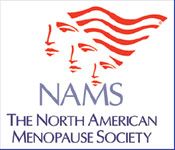Highlights of a new position statement on hormone therapy
from The North American Menopause Society: The position statement evaluates the risk-benefit ratio of peri- and postmenopausal estrogen therapy and estrogen-progestogen therapy for both treatment of menopause-related symptoms and disease prevention.

To guide providers and the lay public about the appropriate role of estrogen and progestogen therapy in peri- and postmenopausal women, The North American Menopause Society recently developed an evidence-based position statement. The full text of that document-an update to a statement published in 2004-can be viewed on the NAMS Web site at http:// http://www.menopause.org/aboutmeno/consensus.htm.
The position statement evaluates the risk-benefit ratio of peri- and postmenopausal estrogen therapy (ET) and estrogen-progestogen therapy (EPT) for both treatment of menopause-related symptoms and disease prevention. Current evidence allowed a clear distinction between areas of consensus and areas in which the evidence was inadequate to draw conclusions. Here are some highlights to guide clinical practice and help you counsel your patients about hormone therapy.
• All women considering ET/EPT should have a comprehensive history and physical examination and mammography, preferably within the 12 months before therapy. Other examinations, such as bone densitometry, should be considered on a case-by-case basis.
Use of progestogen
• The primary indication for progestogen in menopause is to protect the endometrium from unopposed ET, which significantly increases the risk of endometrial cancer in women with an intact uterus. All such women who receive ET should also receive progestogen, either a continuous-combined estrogen-progestogen (CC-EPT) or continuous-sequential estrogen-progestogen therapy (CS-EPT) regimen. Progestogen is not indicated for postmenopausal women without a uterus or for women receiving local low-dose estrogen for vaginal atrophy.
• Insufficent evidence exists regarding endometrial safety to justify off-label uses of progestogen for women who experience side effects from the progesterone component of EPT. Such uses include long-cycle progestogen, vaginal administration of progesterone, the contraceptive levonorgestrel-releasing intrauterine system, or low-dose estrogen without progestogen. Close surveillance of the endometrium is recommended if these approaches are used. Data on lower-dose therapies that reduce side effects are encouraging.
Vasomotor and vaginal symptoms
• Treating moderate-to-severe vasomotor symptoms-hot flashes and night sweats-remains the primary indication for systemic ET and EPT. When HT is used solely to treat moderate to severe symptoms of vulvar and vaginal atrophy (vaginal dryness, dyspareunia, atrophic vaginitis), local vaginal ET is generally preferable to systemic therapy.
Coronary heart disease
• Although most observational and preclinical studies support potential benefits of systemic ET/EPT in reducing the risk of coronary heart disease (CHD), most randomized clinical trials (RCTs) do not. The disparity may be related to proximity of ET/EPT use to meno pause. The role of ET/EPT in primary prevention, when started soon after menopause and continued for a number of years, remains unclear. Data do not support recommendations for using EPT for secondary prevention. Pending additional data, ET/EPT is not recommended as a single or primary indication for coronary protection in women of any age.
Venous thromboembolism
• Both observational studies and RCTs report a significant increase in the risk of venous thromboembolism (VTE) in postmenopausal women using systemic ET/EPT. VTE risk appears during the first year or 2 of therapy and declines over time. Limited observational data and no RCT data exist about differences in VTE risk between transdermal 17DF-estradiol and oral therapies. Lower doses of oral estrogens may be safer than higher doses.
